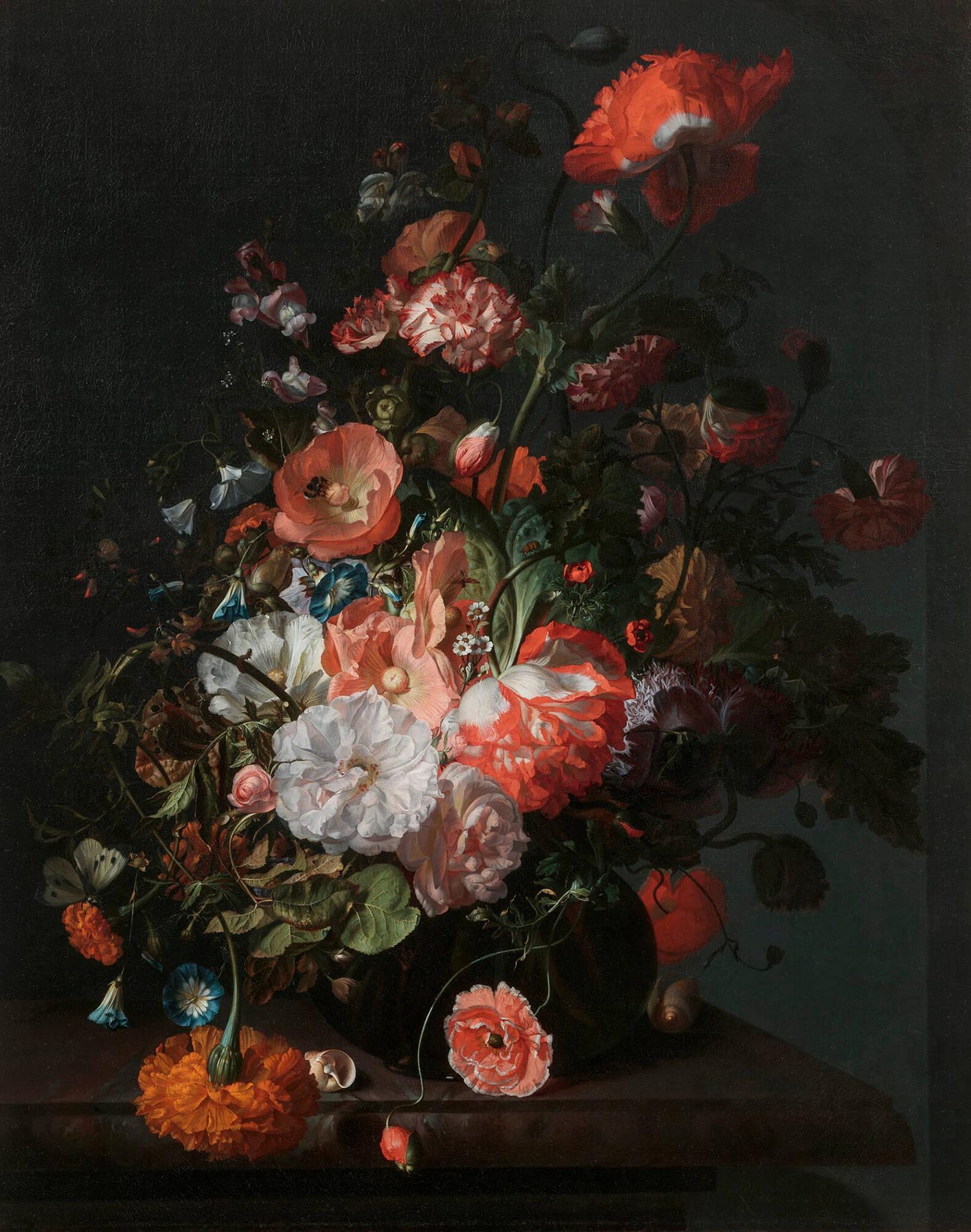Where Art Meets Science: the Still Lifes of Rachel Ruysch
An introduction to Rachel Ruysch, the star flower painter of the Dutch Golden Age.

Flower Still Life (1716-1720) might initially appear to be a simple bouquet. But look closer, and Rachel Ruysch’s painting brims with life. Amidst the delicately-rendered roses and other colorful blooms, one will spot a beetle crawling on a stem, a butterfly perched in the bottom-left corner, a bumble-bee collecting pollen. It is the kind of unique, detailed composition that made Ruysch a star of the Dutch art market. Her works commanded even higher prices than Rembrandt.
Ruysch lived from 1664 to 1750, a time when the Dutch colonial empire reached staggering heights of power, and a growing middle class was hungry to purchase beautiful works of art. Ruysch was the era’s beloved still life artist, earning a fortune through her work and serving as the court painter to Johann Wilhelm, Elector Palatine until the prince’s death.
Despite her fame, she posthumously suffered the fate of many female artists: academics…


